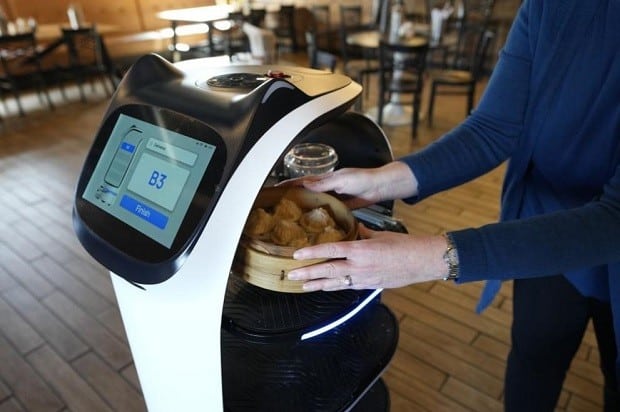Waist-high machines that greet guests, guide them to their tables, deliver food and drinks, and carry used crockery and utensils to the kitchen – you may have seen them in restaurants. Some have cat-like faces and even purr if you pat them on the head.
But are robots the waiters of the future? The restaurant industry is increasingly trying to answer this question.
Many believe that robot waiters are the solution to the industry’s understaffing. Sales of this type of robot have skyrocketed in recent years, and tens of thousands are already gliding through restaurant lounges around the world.
There’s no doubt in my mind that the world is moving in that direction, says Dennis Reynolds, dean of Hilton College at the University of Houston. The college’s restaurant turned to the services of a robot last December, and according to Reynolds, it has eased the workload on staff and made service more efficient.
Others say that robot waiters are nothing more than a gimmick, and that there is a long way to go before they can replace humans. They cannot take orders, many restaurants have staircases, summer gardens and other physical obstacles that robots cannot adapt to.
“Restaurants are pretty chaotic places, so it’s very difficult to implement automation in a really effective way,” said Craig le Clair, Forrester’s vice president of automation research.
However, robots are spreading. The California company “Bear Robotics” introduced its Servi robot in 2021, and by the end of the year, 10,000 such robots are expected to work in 44 US states and abroad. China’s Pudu Robotics, established in 2016, has already provided over 56,000 robot waiters worldwide.
“Every restaurant chain is moving toward as much automation as possible,” said Phil Zheng of Austin, Texas-based manufacturer Richtech Robotics. “In the next year or two, we’ll see them everywhere.”
In the summer of 2021, Li Chai fails to hire staff for his restaurant Noodle Topia in Madison Heights, Michigan and purchases the robot BellaBot from Pudu Robotics. The robot was so successful that Chai bought two more, and now one robot guides diners to their tables while the other delivers the bowls of hot dishes. Employees stack the used utensils on the third robot, which carries them to the kitchen.
Chai now needs only three employees for the same volume of work that previously employed five or six people. It also saves him money. The robot costs him about 15,000 US dollars, and the cost for the employee is 5,000-6,000 US dollars per month.
Chai said the robots allow human waiters to pay more attention to customers, which increases their tips. Customers often post photos with the robots on social media, and this encourages others to visit the restaurant as well.
The relationship between robots and human employees is different. Betsy Giron Reynosa, who works with BelaBot at Sushi Factories in West Melbourne, Florida, says the robots could be a problem. “You can’t tell him to move or anything,” she said. He says there are also customers who don’t want to interact with the robot. But in general he counts it as a plus. It saves her trips to and from the kitchen and gives her more time for customers.
Labor shortages have accelerated the entry of robots globally, Le Clair said. In the U.S., the restaurant industry employed 15 million people as of the end of last year, down 400,000 from pre-pandemic times, according to data from the National Restaurant Association. According to a recent survey, 62 percent of restaurant owners say they don’t have enough staff to meet customer needs.
Pandemic concerns about hygiene and the adoption of new technologies such as QR code menus set the stage for the entry of robots, said Karthik Namasivayam of Michigan State University’s College of Business.
“Once a restaurateur begins to understand and work with one technology, other technologies no longer scare him as much,” he said. Namasivayam notes that public acceptance of robot waiters is already quite high in Asia. Pizza Hut, for example, has 1,000 robot waiters in China.
In the US, robots are entering restaurants more slowly, but some chains are already testing them.
Expectations are that about 30 percent of restaurants will continue to employ human waiters and be perceived as more upscale, while the rest will increasingly rely on robots in the kitchen and lounges. Economic factors are also on the side of robots, he says – the cost of human labor will continue to rise, but the cost of technology will fall.
However, this is not the future that everyone would like to see. Saru Jayaraman, who advocates for higher pay for restaurant staff as president of One Fair Wage, says restaurants could easily solve their understaffing problems by paying their employees more.
“People don’t go to a restaurant to be served technology,” she said. “They go for the experience – theirs and the people they care about, to be served by a person.”









